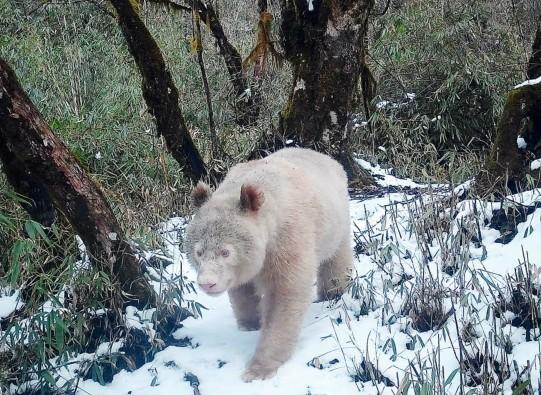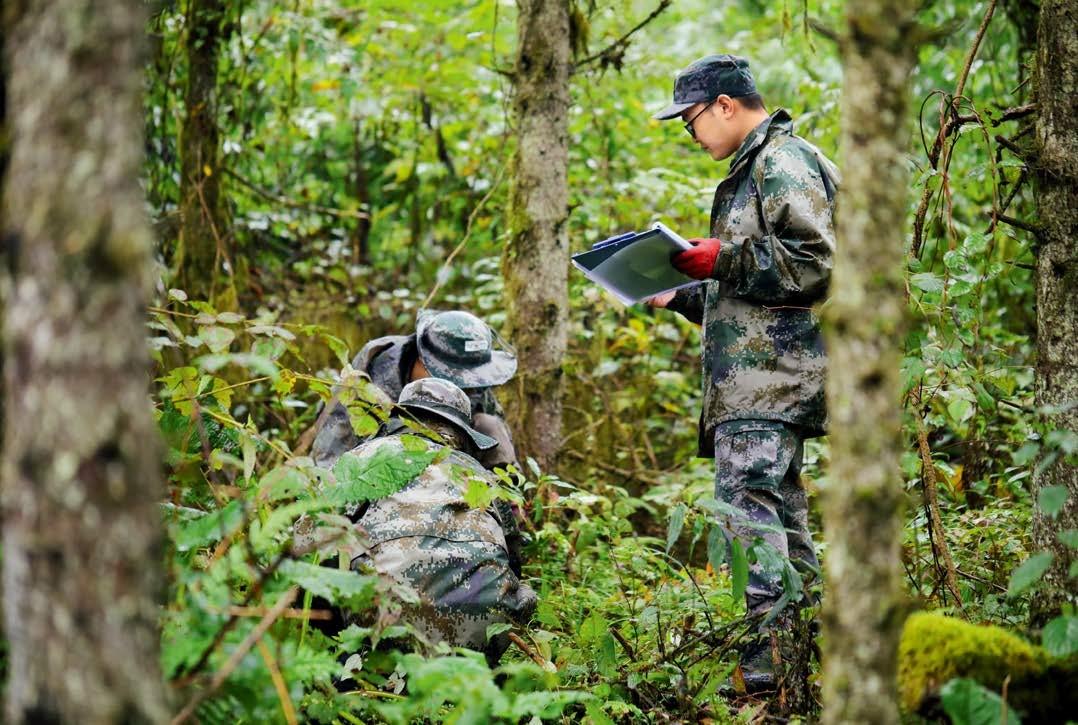A Giant Example of Wildlife Conservation
by Tian Xiao
The giant panda is an iconic species in the ecosystem of Chinas temperate forests. A world-famous star, the adorable animal has called Earth home for at least eight million years. However, due to climate change and the impact of human activities, giant pandas were once endangered and even at risk of extinction in the wild.
Since the 1960s, the population of giant pandas, both in captivity and in the wild, has witnessed recovery through efforts of generations of Chinese researchers and measures for ecological restoration and scientific protection. As of July 2021, the number of wild giant pandas in the country exceeded 1,800. The animal was downgraded by the International Union for Conservation of Nature(IUCN) from “endangered” to“vulnerable.” In October 2021, the Giant Panda National Park was officially established with a total area of 25,800 square kilometers. Chinas giant panda protection has been hailed as a successful example in global wildlife conservation.
Wang Fang, a researcher at the School of Life Sciences of Fudan University and an expert with the IUCN Species Survival Commission, said that although much has been achieved in giant panda protection, habitat fragmentation has remained an increasing tendency. This situation can lead to inbreeding within a small community of giant pandas and even extinction of a small group as a result of a natural disaster or ailment. “Building ecological corridors to connect fragmented habitats of giant pandas is incredibly important for conservation efforts,” said Wang. “This is how to promote gene flow between the wild panda populations.”

The Giant Panda National Park is now vigorously implementing construction of ecological corridors, and the problem of fragmented habitats has been improved. Chances to find giant pandas in the wild are increasing, and different communities are migrating and even reproducing through ecological corridors. Those ecological corridors also connect areas that were not included in protected areas in the past, empowering all creatures to enjoy a complete and continuous “home.”
Reintroduction of giant pandas into the wild is an important means to rejuvenate and rebuild communities of the animals. In 2003, the China Conservation and Research Center for the Giant Panda began training and reintroducing pandas into the wild, the first such effort in the world. “We enabled panda mothers with wild survival skills to give birth in a natural environment,” said Wu Daifu, executive director of the reintroduction program at the center. “This lets the cubs grow up with their mothers and learn skills to survive in the wild. We reduced human intervention and promoted the whole reintroduction process. We want to keep the cubs wild.” He explained that this process would help reintroduced giant pandas survive in the harsh natural environment.



In the past two decades, a total of 11 captive giant pandas have been released into the wild after reintroduction training at the China Conservation and Research Center for the Giant Panda, and nine of them survived. A giant panda reintroduction training team was recently established. In the future, qualified giant pandas will be released into the wild on an annual basis, and efforts will be made to restore small communities of giant pandas. “We will accelerate innovation and promotion of key technologies such as training, reintroducing, and monitoring of giant pandas and strive to release three to six giant pandas into the wild each year,” said Wu. “We will also increase protection of endangered small communities of wild giant pandas, gradually establish a genetic germplasm resource bank for pandas in the wild, and achieve genetic exchange between captive and wild populations.”
Ecological protection in the Giant Panda National Park has also improved. Since the activity area for wild giant pandas has expanded in recent years, their chances of encounters with humans have greatly increased. Understandably, the staff at the national park have the highest encounter rate. Shi Xiaogang, director of the Mujiangping Conservation Station of the Giant Panda National Park in Wolong, Sichuan Province, is one of them. After graduating from a forestry school in Sichuan in 1992, Shi began to work in the primitive forests of Wolong to protect giant pandas. He participated in the third and fourth national giant panda surveys.“Most rangers of our station have come across wild giant pandas, and many have even snapped the images of the animal with their mobile phones,” Shi said with a smile.
The Sichuan Daxiangling field monitoring and patrol team, established in 2018, is a new force in the Giant Panda National Park. With an average age of only around 30, team members patrol the Daxiangling Giant Panda Reintroduction Research Base, the worlds largest training base for giant panda reintroduction.Every year, they cross snow-capped mountains, pass through bamboo forests, and climb cliffs just to carry out anti-poaching patrols in key areas, conduct tracking and monitoring surveys of wild giant pandas and other animals living in the area, and install and retrieve data from infrared cameras. In just a few years, these young people have rapidly grown into the backbone of giant panda conservation.


Generations of people have dedicated their youth and wisdom to giant panda conservation, from tracking research in the wild to captive breeding, from reintroduction to habitat protection, from monitoring in the wild to refined management, and from science popularization to ecological management. People living near the Giant Panda National Park are also actively building a cultural and tourism brand based on the park to achieve a win-win situation for ecological protection and local development.

